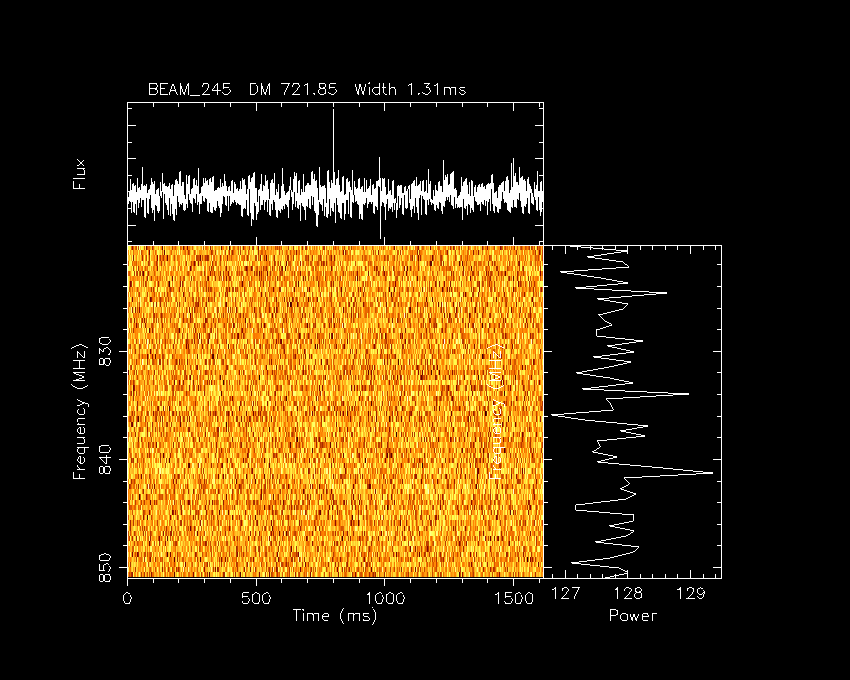At UTC 2019-03-22-07:00:12.3 (2019-03-22.29180903), we found a fast radio burst as part of the ongoing search program (UTMOST), at the Molonglo telescope.
Molonglo is a 1.6 km long East-West array (Bailes et al 2017, PASA, 34, 45) and was operating in drift-scan mode with pointing centred on the meridian at the time of detection. Source localisation is excellent in Right Ascension (5 arcsec at 1-sigma) but poor in Declination (~1.2 deg at 1-sigma) (see Caleb et al 2017 MNRAS 468, 3746).
FRB190322 was found during a blind FRB search programme in real-time using an automated GPU-accelerated/machine learning based pipeline and the raw voltages were recorded for offline processing.
The optimal dispersion measure (DM) that maximizes the signal-to-noise ratio is: 724.2 pc cm^-3. The DM estimate of NE2001 model is ~47.1 pc cm^-3, and YMW16 model is ~46.78 pc cm^-3 at this position, resulting in an intergalactic excess of ~677 pc cm^-3. The upper limit on the DM-inferred redshift is thus z ~ 0.6.
An early estimate (lower limit) of the event’s apparent fluence is ~16 Jy ms (corrected for attenuation of the primary beam in the RA direction, but not in the Dec direction), width ~ 1.35 ms, with a detection signal-to-noise ratio = 12.
The most likely position is RA = 04:46:14.45, DEC = -66:55:27.8, J2000, Galactic: Gl = 278.166 deg, Gb = -36.921 deg. The 95% confidence localisation arc is as follows: (RA, DEC) in (hours, deg)
4.745128 -70.779222
4.749025 -70.278667
4.752725 -69.778056
4.756242 -69.277444
4.759589 -68.776806
4.762778 -68.276167
4.765822 -67.775500
4.768725 -67.274806
4.771503 -66.774111
4.774158 -66.273417
4.776700 -65.772694
4.779136 -65.271972
4.781472 -64.771222
4.783714 -64.270500
4.785867 -63.769722
4.787936 -63.268972
4.789925 -62.768194
A formula describing the localisation arc is:
RA = 4.7701477 + 5.677894e-3*(DEC + 67.024292) – 2.568521e-4*(DEC + 67.024292)**2
where RA is in hours, Dec is in deg, and is valid in the Dec [-71.3,-62.8]
For the dynamic spectra, and the localisation plots, follow this link.
Follow-up observations of the FRB are encouraged.
